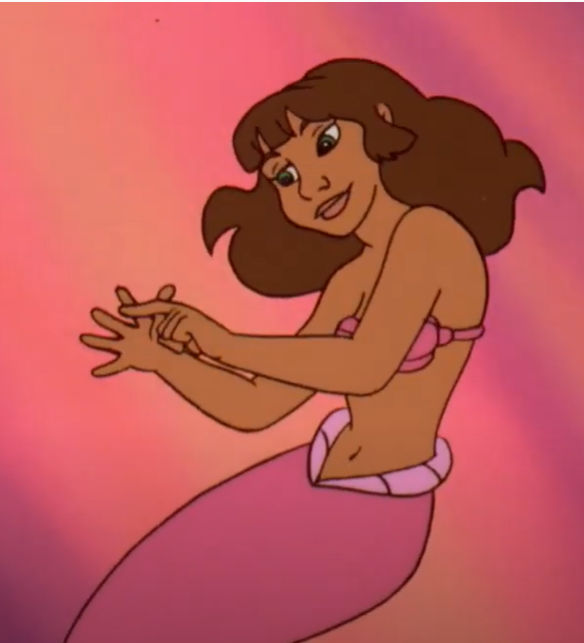It’s a dangerous world that birthed our fairy tales. Before the advent of modern science, disease and disaster all too easily left children disabled or dead. Wilhelm and Jacob Grimm lost three siblings in infancy and Wilhlem himself dealt with ill health (scarlet fever, asthma) for much of his adult life. It is no wonder, then, that disabled characters feature prominently in popular fairy tales. Snow White befriends dwarves. Rapunzel’s prince loses his eyes to a thornbush. Cinderella’s stepsisters hack off their feet to fit the glass slipper and Cinderella’s bird minions peck out their eyes as revenge for years of cruelty. The Pied Piper kidnaps all but three children of Hamelin: one deaf, one blind, and one unable to walk, so they can’t hear the music or follow after their friends. The little mermaid trades her voice for a pair of legs, voluntarily gaining a communication disability to fix her walking problem.
Modern people understand disability through the medical model (people are handicapped by having imperfect bodies) and the social model (people are handicapped by the environments they live in). Nowadays, medical aspects of disabilities are mitigated through surgery, physical therapy, and medicine, as well as supportive devices such as glasses, wheelchairs, and hearing aids. Engineering has given humans the power to transform our environments-elevators, for example, make a world of difference for people who have difficulties with stairs.
But in the past, medicine amounted to little more than herbs and guesswork and the technology to alter our physical environments hadn’t been born yet. Disabilities were, apparently, incompatible with happy endings. While an evil character may stay disabled as punishment, like Cinderella’s stepsister, disabled nice people, like Rapunzel’s blind prince, received miraculous healings. But now that audiences are used to transforming the world around them, that opens up space to see fantastical characters interact with mobility aids and magical service animals.
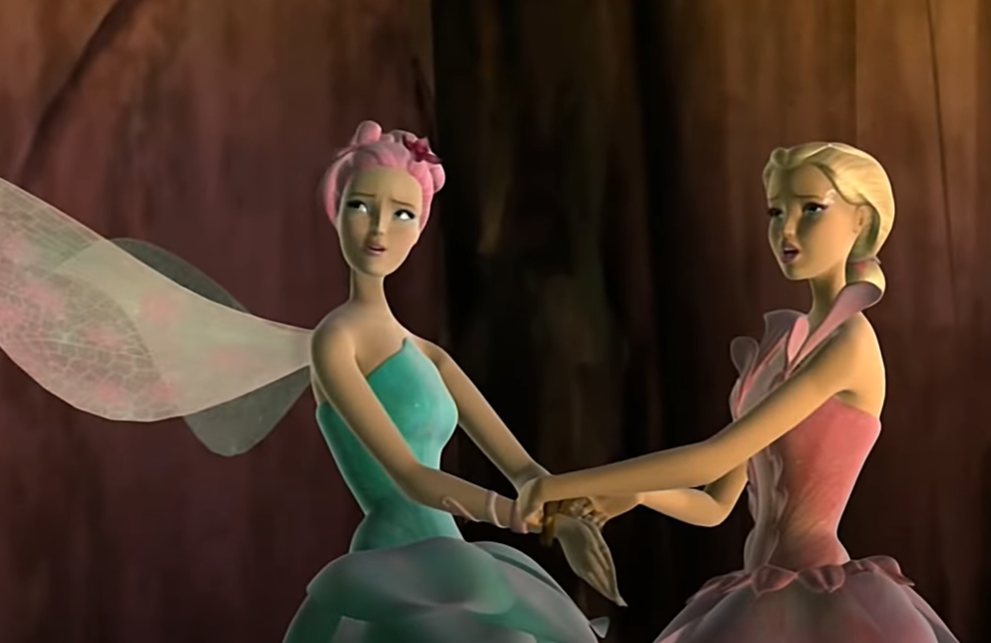
Since fairy tales aren’t rigid in their ideas of what a “normal” body should look like, stories that feature disabled mermaids or fairies allow audiences to take a step back from the social model we live in. On a human scale, Elina, protagonist of the movie Barbie: Fairytopia, wouldn’t be considered disabled. She has four functioning limbs. But fairies have six. The movie opens with a gaggle of pixies bullying Elina for her disability.
First Pixie: Hey, what do you call a fairy without wings?
Second Pixie: I don’t know. What?
First Pixie: Nothing! Who’d want to call a wingless fairy?
Soon after, an evil sorceress infects Fairytopia with a formula that weakens all flying things. Elina, however, is not a flying thing, so she’s fully capable of saving the day. Her heroism is rewarded by an enchantress giving her a necklace that summons up an artificial pair of wings. Disability vanquished. Cure-endings may represent a happily ever after for that fictional character, but that’s not an uplifting message for real disabled viewers, who have no fairy godmothers to grant them wings.
Gail Carson Levine’s 2005 novel Fairy Dust and the Quest for the Egg, commissioned by Disney as part of their Disney Fairies media franchise, shows that a disabled fairy can stay wingless and still have a happy ending. The franchise expands the world of Neverland, giving Tinkerbell a gaggle of fairy friends. Water fairy Rani dreams of swimming, but fairy wings become useless when waterlogged. In Quest for the Egg, the fairy friends need to deliver an urgent message to Neverland’s mermaids and Rani has a friend cut off her wings so she can reach them. (Don’t worry, the surgery’s painless.) There’s no shortage of magic in Pixie Hollow, but instead of healing the mark of Rani’s heroic sacrifice, she’s gifted a dove as a service animal/flying wheelchair. Being wingless lets Rani experience water more fully than she ever could as an able-bodied fairy. In the subsequent book Rani in the Mermaid Lagoon, her reliance on her dove gives her low self-esteem and she runs off to live with mermaids for a time, only to find mermaids lazy, vain, and annoying. She returns to friends who love her, wings or no. Rani is a major player in the books and Levine, who named the fairy after her sister, called her “my favorite, because of her deep feelings, her sympathy, enthusiasm, and generosity.”
Yet Rani is written out of the film franchise. The reason isn’t clear. Perhaps the animators didn’t want to deal with an ever-present dove, or writers favored Silvermist, a more minor water fairy from the books, who did make it into the films. Or perhaps, because the first movie is an expansion of the fairy world rather than a straight-up adaptation of the books, the writers thought it was confusing to have a wingless fairy without the backstory of how she lost her wings. Since so many book characters make it into the film, the absence of a major player like Rani is obvious to fans of both.
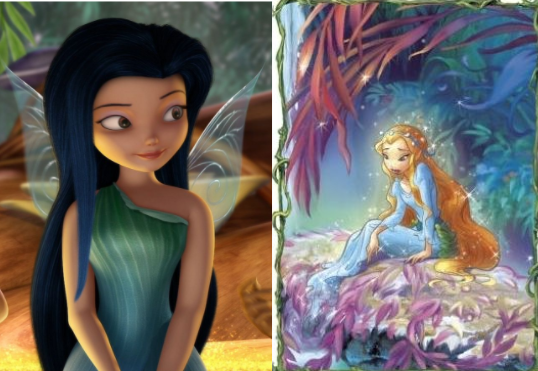
The same thing happened when Aquamarine, a mermaid novel by Alice Hoffman, was adapted for film. In two previous posts, we’ve discussed the difficulty mermaids face whenever they venture ashore to find human lovers. Under the social model of disability, a mermaid isn’t disabled at sea, but they become floppy and immobile on land. The viability of most mermaid-human relationships rests on whether or not a mermaid can grow human legs. In Aquamarine, human girls Claire and Hailey meet the titular mermaid, who washes into a swimming pool during a storm. She refuses to leave until the girls help her meet Raymond, the cute, nerdy snack bar attendant. The chlorine stings her skin and she’ll die of dehydration if she can’t return to the sea, but love is at stake. Claire’s grandfather has a wheelchair leftover from an injury from which he has now (mostly) recovered. He loans the wheelchair to Aquamarine for her date and even helps the girls drive her around.
After the girls give Aquamarine a makeover and help her into the wheelchair, she is “completely delighted” with her appearance and declares, ”I look like a real girl.” (Aquamarine, 67)
Real girls, so far as she cares, use wheelchairs.
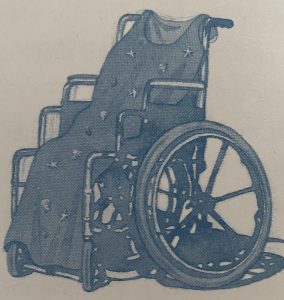
And so far as Raymond cares, too. At first sight, he is completely enamored with this beautiful girl and wants to start a relationship, but Aquamarine won’t last on land. Scales actively flake off and pile up beneath her wheelchair during the date. The mobility problem is easily solved, but she faces very real danger if she can’t get back to the sea. Aquamarine’s friends help her back to the ocean and Raymond leaves for college-a seaside college, where he joins the swim team and reunites with Aquamarine in the bay. She doesn’t long to be “part of your world,” but she does want Raymond, so he becomes part of hers.
But in the 2006 movie adaptation, Aquamarine grows legs. Mermaids, you see, can venture ashore until sundown, when their tails grow back. This story change allowed filmmakers to cast an able-bodied actress in the part of Aquamarine, rather than give a role to a disabled actress and supplement the swimming scenes with special effects and stunt doubles. The good message inherent in Raymond and Aquamarine’s romance is lost. Not a message that lovers of disabled people are heroes, or that romance is charity-but that a decent guy and a girl who uses a wheelchair can have a sweet romance.

Rani and the original Aquamarine prove that there is a market for disabled fairy tale narratives, that these stories can enchant fans and garner adaptations. But disabilities-a key element making these stories more than just another fairy or mermaid tale-are absent from a medium where they could do further good.
Except for when they’re not. The Little Mermaid is almost always a story about disability, though Shirley Temple’s adaptation took away her muteness. In Amanda Leduc’s book Disfigured, which is equal parts critical analysis of disability in fairy tales and a memoir about life with cerebral palsy, she reflects on her childhood relationship with Ariel. “She has more movement as a mermaid, as the body that is different from other bodies I know. This is the body that gets splashed across the movie promos, the body that sits on the cover of the DVD. The body without legs, the body that doesn’t look like the bodies of everyone else.”
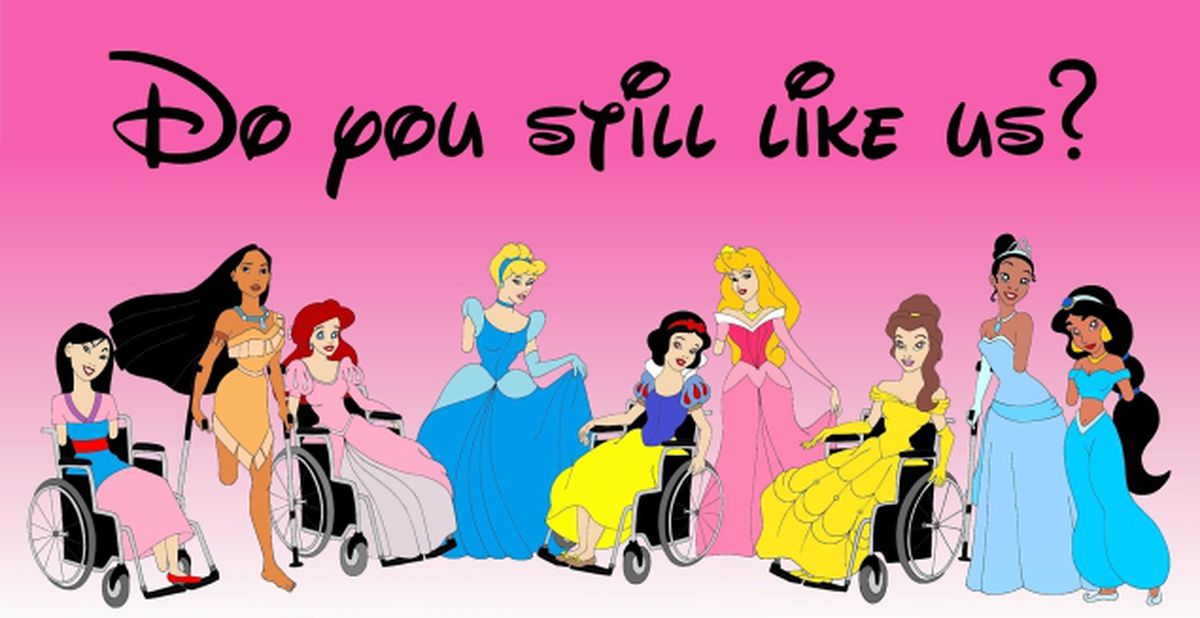
The Disney film birthed a three-season prequel TV show of the same name. Gabriella Bommino, a deaf leukemia patient and fan of the film, was honored after her death with a mermaid character in an episode that explored both communication and mobility disabilities.
Ariel longs to dance ballet after spying a ballerina by the seashore, but mourns that “Her dance is done with two tails, tails that spin and bend like mine could never do.” She then meets Gabriella, who explains through Ollie, her interpreter octopus, that she wants to sing and knows of a magic starfish who can grant their wishes.
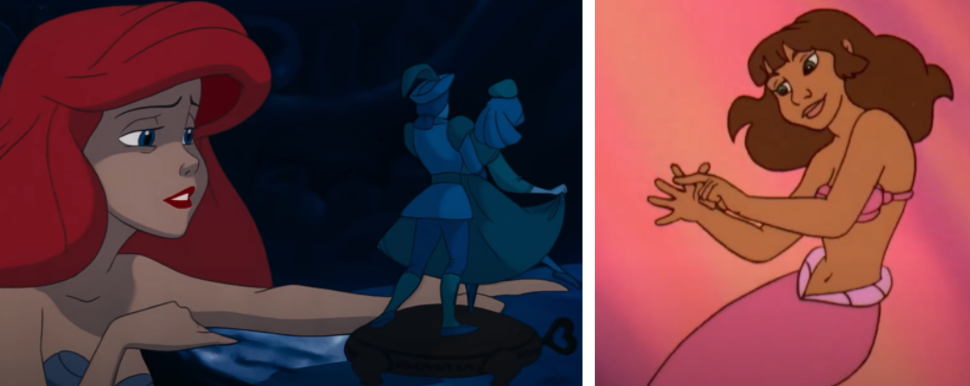
They set off on an adventure. Gabriella teaches Ariel simple signs along the way, which Ariel demonstrates for the audience. Even before Ollie explains Gabriella’s deafness and his role as interpreter, Ariel knows that she should always address Gabriella, not Ollie. Sebastian slips up once, but immediately corrects himself.
Sebastian: Don’t tell me we’re going in there.
Gabriella: (points to spooky underwater forest)
Ollie: We’re going in there.
Sebastian: I asked you not to tell me that! (gasps, looks stricken) I mean I asked her not to tell me that.
After braving perils en route to the magic starfish, he turns out to be powerless to grant their wishes. Gabriella laments that she’ll never be able to express herself through song.
“You express yourself beautifully, Gabriella-with sign language!” Ariel tells her. “We don’t need magic. We’ll make our own wishes come true.” They then conclude the episode by singing a duet, Ariel vocally and Gabriella in sign.
And really, wouldn’t it be easier for all mermaids to communicate in sign language, since they live underwater? We are no longer living in a world where disabled children are branded as fae changelings and left out in the cold to die, a world where it could be presumed that nothing short of a miracle healing could grant a happy ending. Living with a disability and all the pain, fatigue, or inconvenience that entails will never be easy, but if science can transform our world, magic can transform our stories. If humans can make their own happy endings with wheelchairs, service dogs, and sociopolitical reform, that ought to be represented in fantastical media, where fairies and mermaids, whose wings and fins have always hinted that there is not one “right” kind of body, can be used to showcase happy endings for disabled people who are not healed, but find joy in their loves, in their friendships, and in the companionship of serviceable doves and octopuses.
